How a restaurant waitlist app can drive sales and retention
Skip the article and turn takeaways into action by scheduling a call with our team.
Restaurant waiting lists have come a long way from notepads, buzzers, pagers, and ballpark guesses at the estimated wait time. Restaurant waitlist software has evolved to address just about every pain point around the guest experience, as well as front-of-house operations.
Online check-in, self-service kiosks with intuitive interfaces, accurate estimated wait times, and real-time updates are just a few common features that will help walk-ins decide to stay in line. For staff, managing everything on an iPad or tablet, sending real-time SMS updates, and replacing phone calls and crowded waiting areas with an online waitlist saves time and alleviates stress during peak hours.
Switching from the analog world to the digital world has made restaurant management significantly easier, as much of the heavy mental lifting that used to reside in manager’s heads has been transferred to the glorious automation of management software. This leaves managers with both more data to make smart decisions and more time to handle the human side of the business, which is good for everyone involved.
If you’re looking to upgrade from a basic pen-and-paper system or getting ready to open your first restaurant, a restaurant waitlist app will help streamline your front-of-house operations and increase customer retention.
What is a restaurant waitlist app?

A restaurant waitlist app is a digital-world update of the age-old practice of appointment scheduling via writing down names and party sizes, providing a best guess for wait times, and calling out names when tables are ready. Waitlist apps have made significant improvements to the traditional waitlist management process by automating many of the time-consuming and painstaking tasks that front-of-house staff were previously responsible for.
Restaurants have flocked to front-of-house (FOH) management systems in the last few years, with the trend really ticking upwards starting around 2020. Customers benefit in multiple ways as well. The ability to check in online and receive notifications via text message allows walk-ins to head to the restaurant at the right moment, rather than wasting time in the waiting area. Not only do they save time, but they avoid long lines and a frustrating waiting experience, and can feel assured of getting a table.
How do waitlist apps work?
Many popular FOH platform providers have either created their own waitlist management systems or acquired others. Yelp Guest Manager, for example, acquired Nowait, which is now a key feature of the platform. Additional providers include Waitlist Me, TablesReady, Hostme, NextMe, and Waitwhile. Larger FOH platforms like Resy and OpenTable both offer waitlist features, which are quickly becoming standard in FOH suites.
While each of these platforms offers different features and pricing, they cover the same essential functionality for restaurant owners and managers to streamline front-of-house operations.
Here’s how a restaurant waitlist app works, with Yelp Waitlist as an example:
- Guests can join your waitlist via Yelp Waitlist on the Yelp app or via a widget on your restaurant website. A simple interface allows them to enter their name, party size, phone number, and other essential information.
- Alternatively, walk-in guests check in, either using an online check-in feature from your website or on-site using Yelp Kiosk.
- Guests can specify what kind of table they’d like or any special notes like a birthday or anniversary.
- Restaurants can cancel guests in the waitlist if there’s a no-show or if the customer decides to cancel. Additionally, the number of guests can be updated in the Waitlist tool.
- Each guest can view the digital waitlist on their phone for accurate wait times. Waitlist apps use historical data to predict average wait times, so restaurant staff don’t need to risk disappointing customers if their predictions are off. Yelp Guest Manager quotes wait times with up to 92% accuracy.
- Guests receive an SMS notification when their table is ready.
- The Waitlist app, together with your point of sale (POS) system, collects data for each guest to remember their dining frequency, favorite orders, average party size, and other helpful information that you can use to your advantage when sending out messages from your CRM system.
This Guest Manager Waitlist tutorial will give you an idea of what our system looks like. It’s pretty intuitive.
How do waitlist apps compare to online reservations?
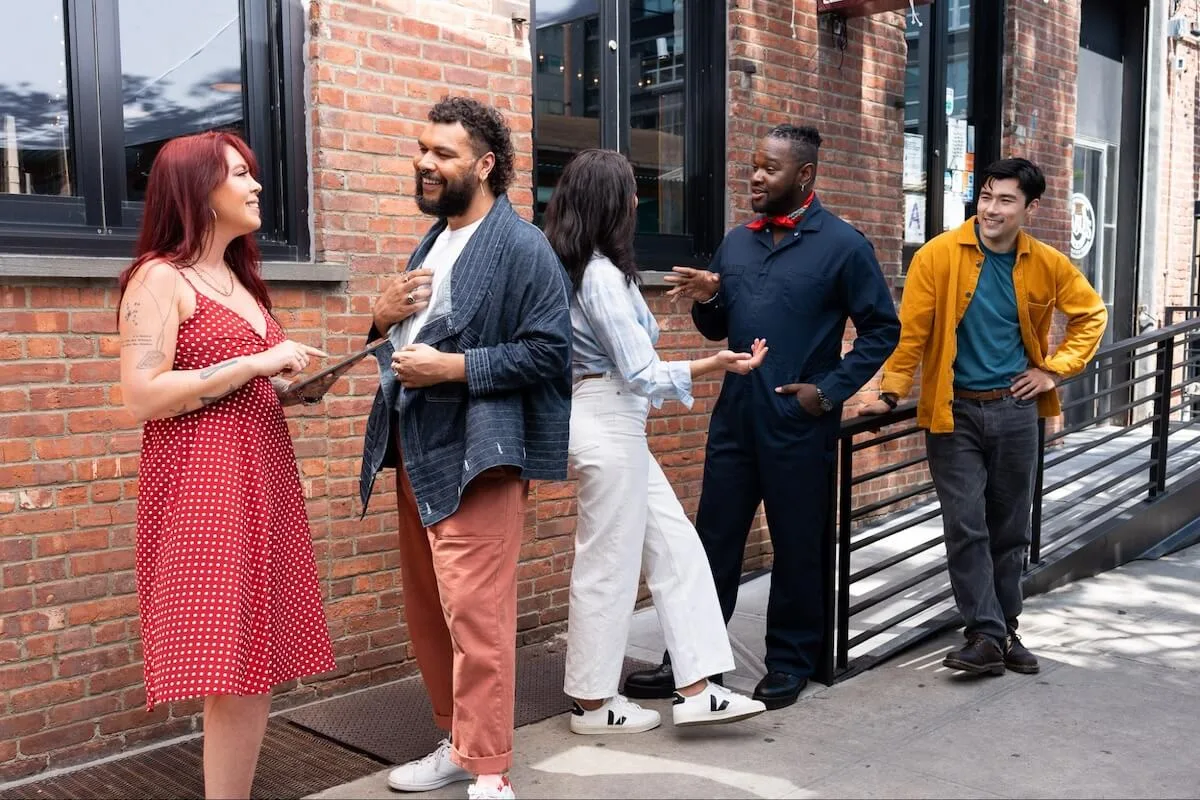
Restaurant waitlist management tools and online reservation software can provide similar benefits to owners, staff, and customers alike. Many online booking platforms will also offer a waitlist feature, allowing operators to manage restaurant reservations and walk-ins with one iPad or tablet.
If your restaurant takes walk-ins, then waitlist app functionality should play a large role when deciding on a full front-of-house system vs. a standard reservation platform. Online reservations may help secure a strong customer foundation, but a good waitlist app can help you reach higher occupancy levels and reduce no-shows, which directly translates into greater sales.
Waitlist apps and online reservations have many things in common:
- Most waitlist apps are part of a larger reservation system, or in Yelp’s case, a full front-of-house system.
- Waitlist apps and online reservations both allow customers to add and modify their information online, reducing the need for front-of-house staff to take phone calls or monitor waitlists and reservations manually.
- Many waitlist apps and online reservation systems integrate with POS systems, loyalty programs, and other technology, allowing management to streamline operations.
- Similarly, many waitlist apps and online reservation platforms allow staff to turn tables quicker with more effective table management and also recognize loyal guests—while helping keep track of their favorite orders.
- Waitlist apps and online reservations both collect customer information upfront, as well as provide reports for helpful insights to boost your bottom line.
The main differences between waitlist apps and online reservations parallel the differences between walk-in customers and those with reservations: Online reservations will help you fill tables in advance, while waitlist apps can help you manage walk-ins during peak times. Using both of these tools in tandem will allow you to capture the best of both worlds.
Training your front-of-house staff to effectively manage reservations and a waitlist simultaneously will minimize the impact of no-shows, as well as provide walk-ins with a pleasant surprise when their table is called earlier than expected.
How restaurant waitlist software can boost profitability

Restaurant waitlist software provides many advantages to restaurant owners and front-of-house staff who routinely get more walk-in customers than their dining room can allow. And while waitlist apps do require a nominal fee, they have potential to deliver a great return on investment. Since waitlist software is paired with top-notch FOH software that includes table management, POS integration that allows for tableside ordering and credit card payment, online ordering, and more, you’ll see the investment is well worth it.
Here are a few ways that waitlist software can boost sales, improve staff retention, and elevate the customer experience at your restaurant:
- Allowing customers to check in online and view wait times in real time relieves hosts from having to tend to these issues, freeing up time for them to seat guests while reducing their overall stress. Increasing workplace happiness is a great way to increase staff retention.
- In some cases, this time-savings may also allow restaurant owners to schedule fewer hosts for the host stand, resulting in big labor cost savings.
- Providing ease and transparency for monitoring wait times allows guests to spend less time in waiting areas, leading to fewer cancellations and no-shows. Yelp Guest Manager customers have average no-show rates below 10%.
- Reducing pain points around restaurant wait times improves the overall customer experience. Happier customers are more likely to return, talk about their dining experience with friends and on social media, and spend more during their next visit.
- Restaurants can set a limit on the number of customers allowed in during a given time period, reducing crowding and making for a better dining experience.
What do customers say?
So, you’ve heard what we have to say about waitlist apps—but there are plenty of customers talking about how quality queue management can quell their qualms. Check out just a smattering of unsolicited opinions below—and you can believe there are many more where these came from:
We’ve certainly noticed that it’s struck a chord with customers, and we get why. No one wants to waste time doing things the old fashioned way of talking to an endless string of people who may or may not be able to guarantee you a table and a time. Doing things with the push of a few buttons on your iPhone or Android device is way better, and we’ll stand by that claim.
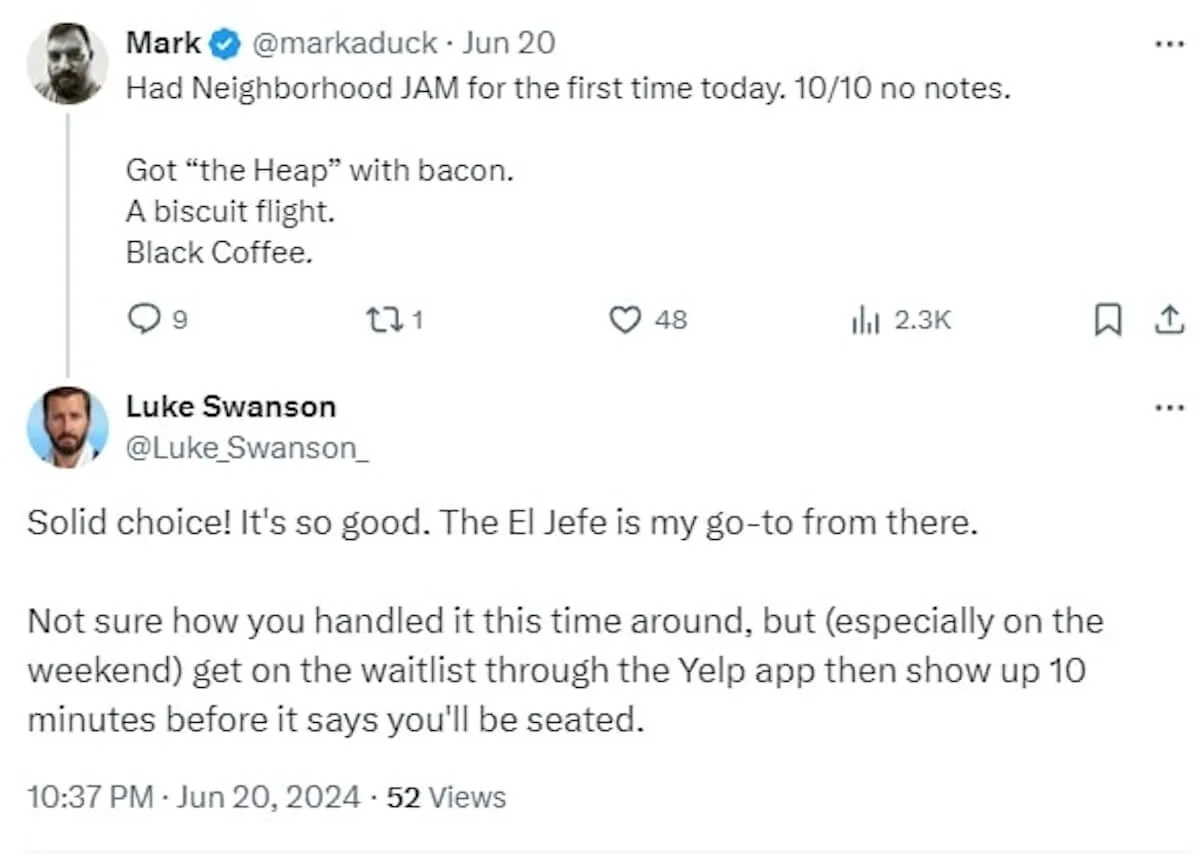
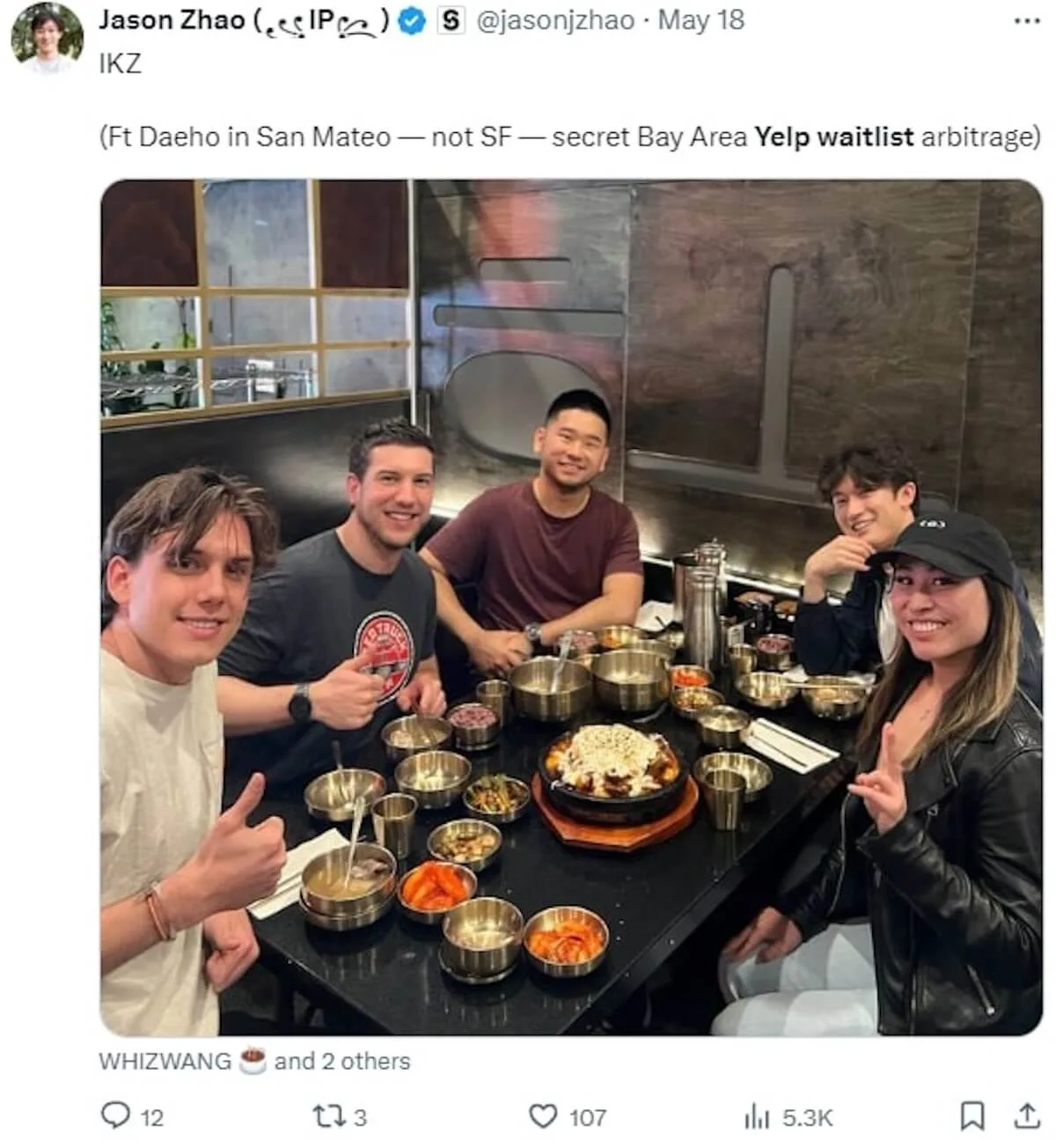
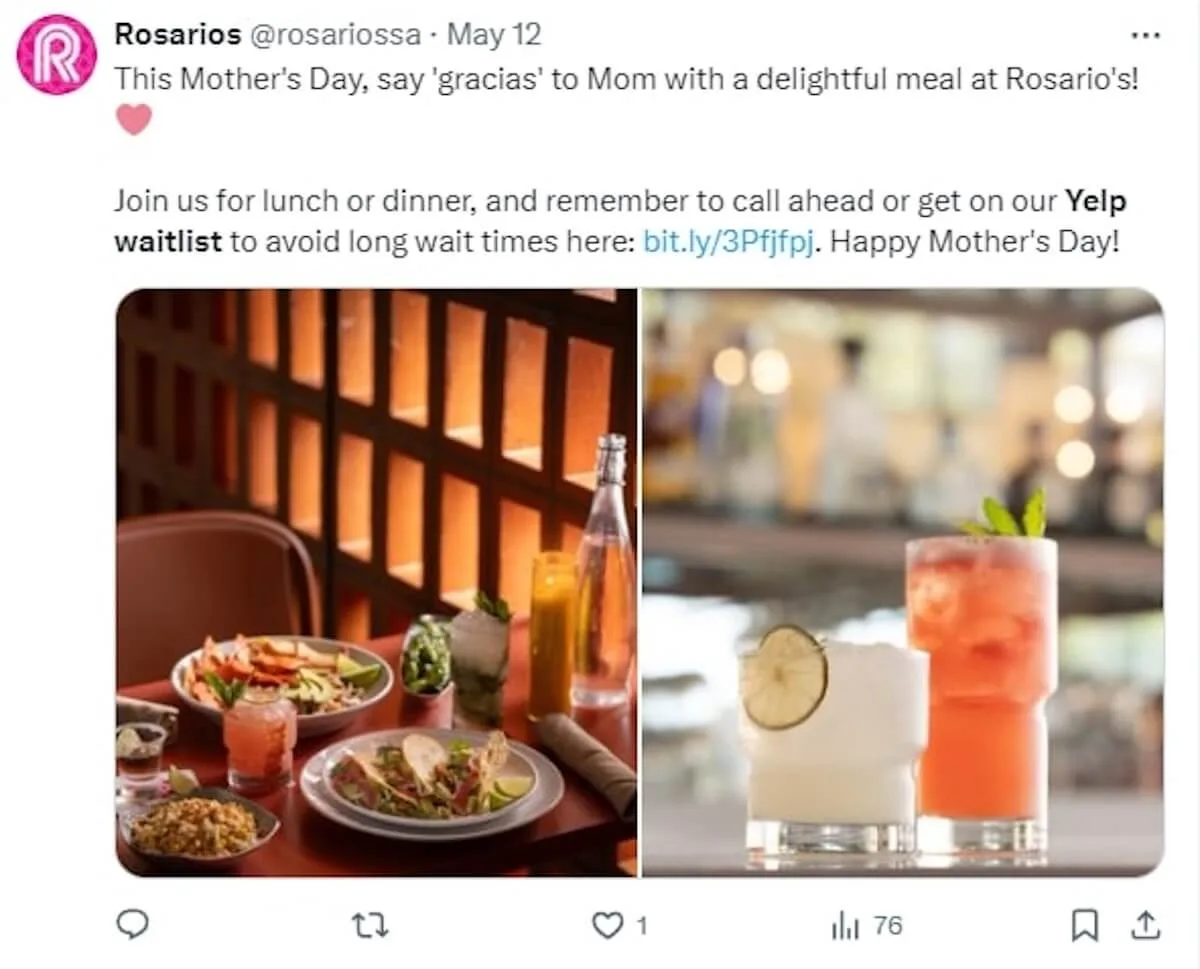
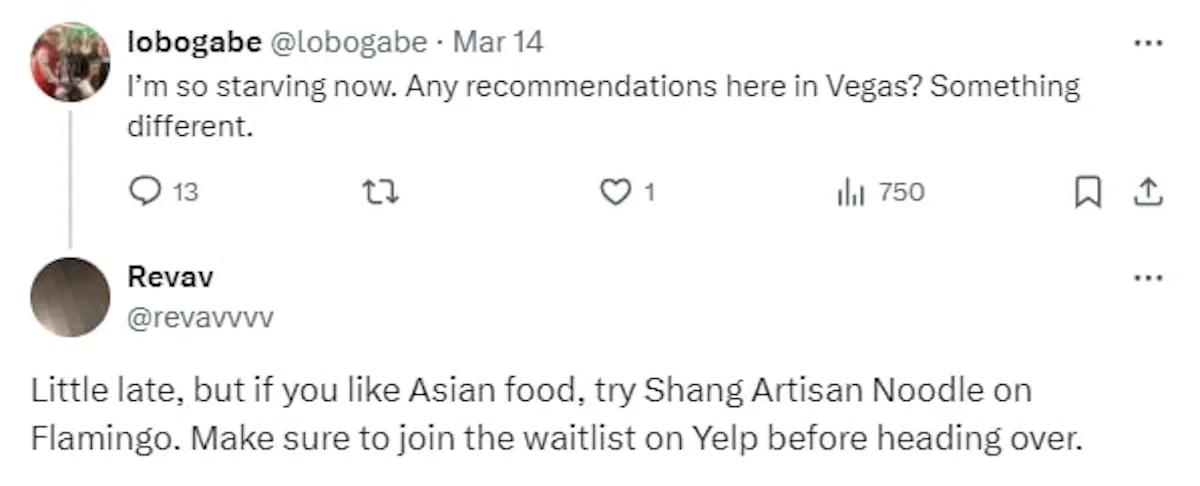
The best restaurant waitlist app
Accurate wait times, real-time SMS messaging, and contactless kiosks provide essential support for effective table management. And while there are multiple waitlist apps, Yelp is a clear winner. Yelp Guest Manager saves your front-of-house staff countless hours by showing guests wait time updates in real time and sending a text message when their table is ready. Contactless kiosks and online check-in let walk-ins of all party sizes check in on their own, showing up to your restaurant closer to their seating time rather than spending a lot of time in the waiting area.
Yelp’s restaurant waitlist software is part of their comprehensive front-of-house system that includes reservation management, marketing, and so much more. Take your restaurant waiting list—and your entire operation—to the next level with Yelp. Get started with Yelp Guest Manager today!